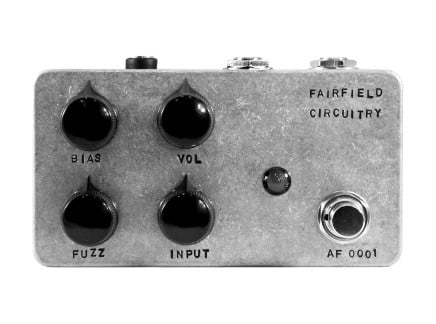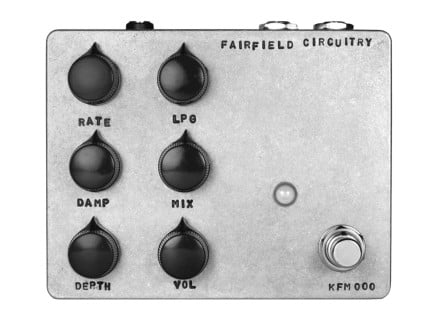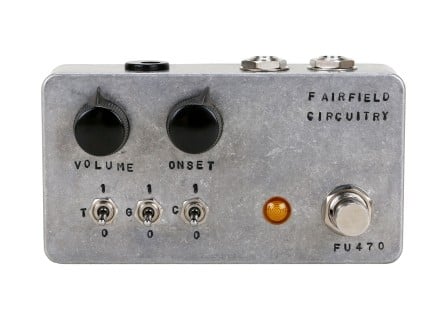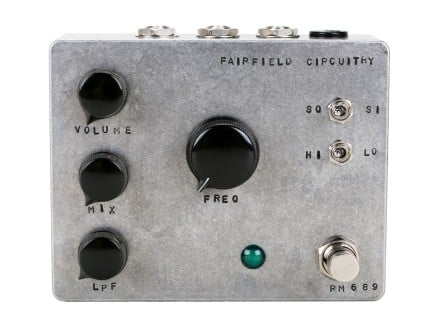As discussed in our last pedal love article, 2021 has brought some amazing fuzz pedals that we can't get enough of, and Fairfield Circuitry's ~900 surpasses our standards for quality grit and hair. This four-knob fuzz pedal truly knocked it out of the park, with many of us here utilizing ~900's amazing tone throughout their setup, be it alongside guitar, bass, synths, or drum machines!
Though not exactly a descendant of Fairfield's now discontinued Four Eyes, ~900 is a distant cousin utilizing the same JFET gain stage cascading into yet another one. The simple design of ~900 moves away from the more complex build of Four Eyes, trading three band EQ and parallel gain staging for a simplified Bias control that not only acts as a wonderful way to fizz out your sound, but also as an interesting headroom and tone control. ~900 truly lets you define how messed up your sound gets, driving your signal from soft warmth and hair to utterly blistering destruction.
Alright, Alright. Break It Up!
Everyone loves layers of distortion, and ~900 does this well with its two layers of gain staging that work quite well in a multitude of position combos. This versatility of layering in distortion at different stages makes for excellent overdrives as much as it does huge walls of fuzz. The Bias control is just as important in determining how much of the signal gets through and when it starts to break apart, and since Bias is applied to the second gain stage, your entire signal is affected by this knob. To set ~900 at a relatively neutral starting point, I've found turning both the Fuzz and Input controls all the way down, the Vol(ume) all the way up, and the Bias to around 10/11 o'clock is as close to the dry signal as you can get.
Because both gain stages run in series, you have to think slightly backwards for softer tones, but with such a simple interface, ~900 makes it easy to move between drives. Turning just the Fuzz control up will give a fantastically warm and saturated sonic quality with a slight hint of fuzz at the highest levels. Engaging the Input control at any point presents some mean and fat distortion that pushes both JFET gain stages, and without even touching the Fuzz control, you can basically approach a fuzz tone. These two controls in combination make for a heavy and malicious tone that will smack you up, down, and all around—I enjoy sending bassy information with a resonant filter for gurgly and fizzy growls.
Introducing the Bias control truly brings the sound of dying batteries and crackling speakers, making gated and pungent tones that just sizzle on the tails. The further you increase Bias, the more ~900 takes away some of that rumbling low end and chokes out the entire tone while still trying to retain some semblance of the dry signal. ~900's controls combine to create some nasty timbres by providing a multitude of ways to vary the available headroom, and what's fascinating about Bias is that going further CCW from 10 o'clock will actually decrease the gain for a little extra headroom—something you can utilize for those lighter distortion use-cases.
In the video above, you can hear the doom Jacob brings forth in his performance, featuring heavy power chords and sliding melodies, made more despairing by a maxed out wall of fuzz from ~900. Wes's brutally hardcore 808 set makes for a great example of how weighty your basses can get and how buzzy and crushed your noise and percussion parts become, making for ultimate sonic cataclysms. Adding any drive to your effects processing imparts a wealth of harmonic richness, edge, and punch to your sound design choices, and with how versatile and present ~900 is, you'll be sure to make any sound stand out in a mix or performance. With plenty of examples throughout the internet showcasing ~900's powerful and dismantling properties, it isn't hard for us to see how influential it will be in sound design for years to come.











